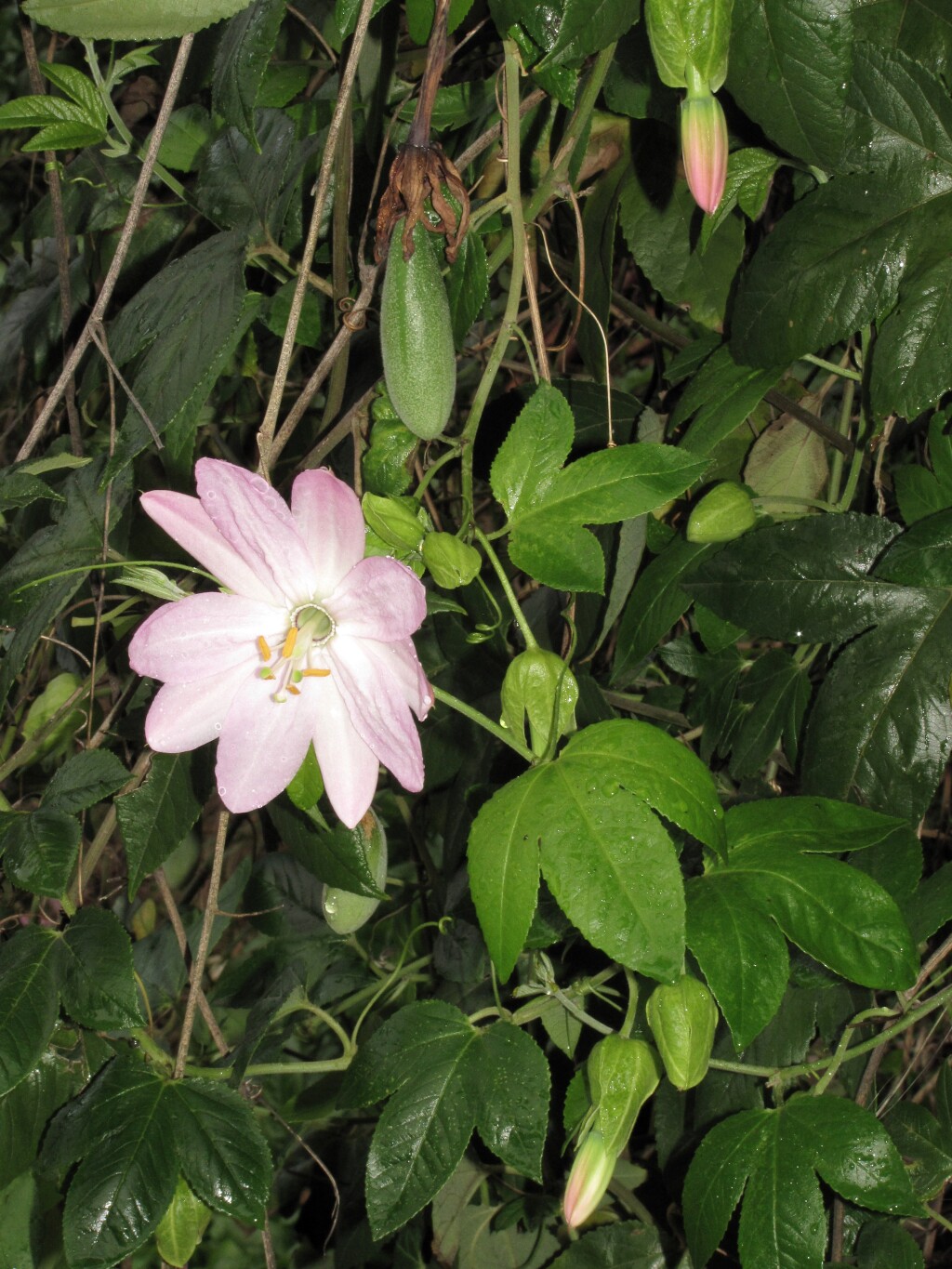Passiflora tarminiana
Coppens & V.E.Barney Banana PassionfruitPubescent climber. Leaves 3-lobed, up to 10 cm long and 14 cm wide, undersurface covered in velvety hairs, upper surface with hairs mostly along veins; lobes acute; margins coarsely toothed; petiole 1.5–3 cm long, with 8–12 small glands; stipules with broad, irregular base extending on one side into linear segment, c. 2–5 mm long. Flowers opening to 8–9 cm across; bracts 2.5–3.5 cm long, green, fused for c. one-third their length; floral tube (hypanthium plus calyx-tube) 6–8 cm long, c. 1 cm diam., olive-green outside; calyx-lobes 2.5–4 cm long, white inside; petals as long as calyx-lobes, pink; outer corona a purple band with pink spots; inner corona white; anthers and ovary subtended by stalk 7–8 cm long, ovary-stalk hardly extending further. Berry oblong, 6–7 cm long, 3–3.5 cm diam., yellow. Flowers Jan.–Mar.
GleP, VVP, GipP, OtP, EGL, EGU, HSF, OtR, Strz. Also naturalised SA, NSW, Tas. Originates from South America. Often grown in home gardens as an ornamental climber and naturalised in a few scattered localities including the Otways, Dandenong Ranges and Warburton, where invading tall open forest.
Entwisle, T.J. (1996). Passifloraceae. In: Walsh, N.G.; Entwisle, T.J., Flora of Victoria Vol. 3, Dicotyledons Winteraceae to Myrtaceae, pp. 376–379. Inkata Press, Melbourne.
 Spinning
Spinning



